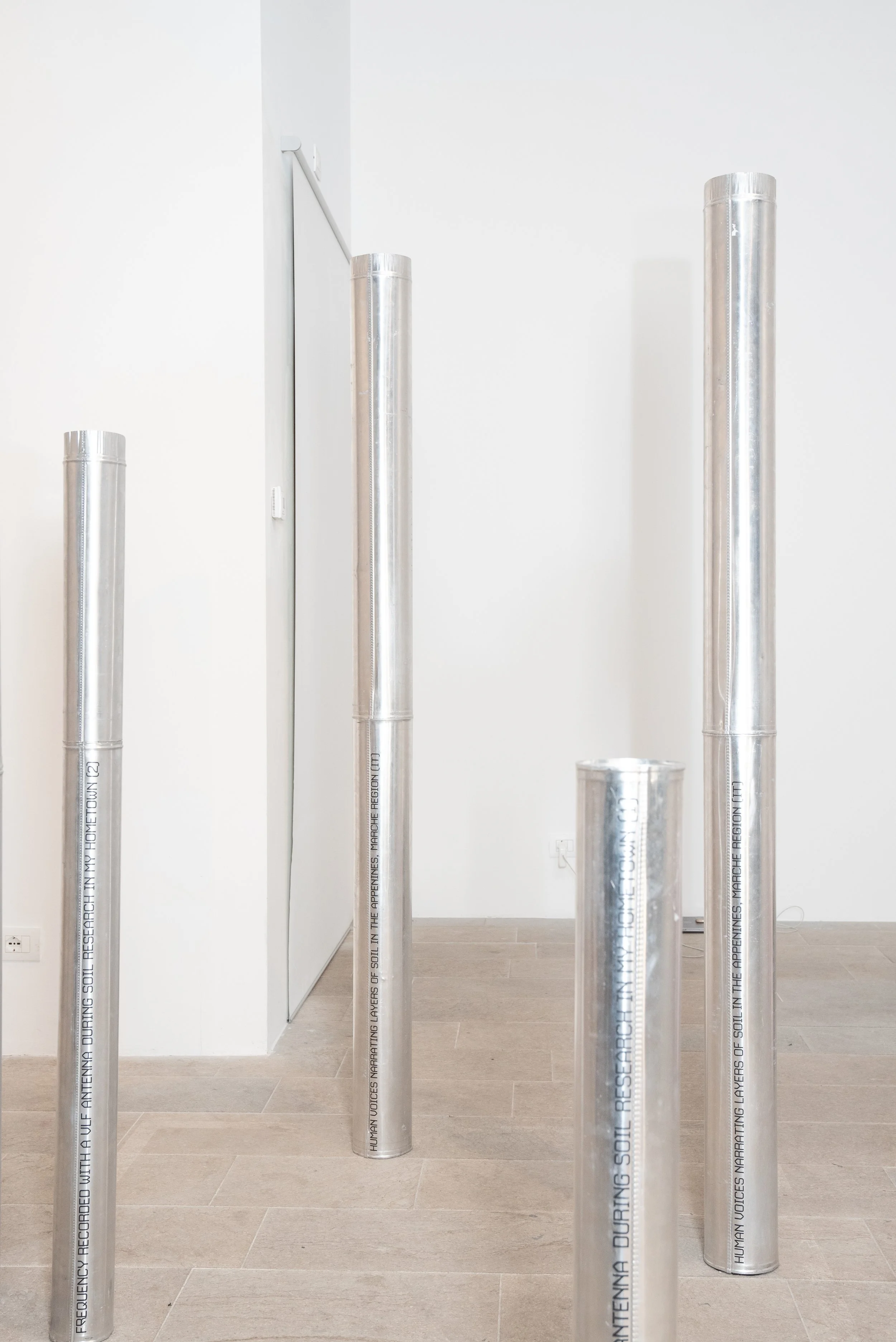When Voice Moves Mountains
Rooting the artistic research of this project around the earthquake-prone area of my hometown back in Central Italy, it all started from the small thought that —from a linguistic point of view— when using the term grounded we always refer to something very stable, based, founded without considering the possibilities that unstable grounds could evoke. I invested my energies into inquiring and experimenting with embodied ways of relating to the instability of the ground beneath our feet, looking into vocal-deep listening practices and weaving together vocal, post-humanist, new materialist and de-colonial discourses.
Indeed, connecting geological and human time, When Voice Moves Mountains is a sound installation which subverts the use of the metal pipes from the TABOO Faultline Observatory in the region Marche, Italy. If in this earthquake-prone region they act as extractive elements, in this narration they evolve as sensible mediators of sonic data. Visitors can interact with the pipes to perceive vocal acts (listing the layers of soil composing the mountains around the area) and underground frequencies (recorded in my region with a VLF diy antenna) as sculpting agents of a space, allowing bodies to become conductors of voices, vibrations, frequencies.
When Voice Moves Mountains explores ways of relating to the instability of the ground beneath our feet and to the data we extract from it. In the 19th century, seismology combined human observations of tremors—gathered through bodily experience—offering a much more multidisciplinary approach than the segmented, precise, and isolated methods we apply today. I am wondering how bodies can be brought back into the scene and how we might develop a different perception of the ground through embodied practices and sonic mediations. Also, is there a way to make the land legible through a different type of mediation? By connecting geological and human time, the work embodies a shift from time as a quantitative measure (collecting data) to time as a lived, qualitative experience (sensing data). Perhaps an alternative way of perceiving those unstable grounds through embodied practices can lead us to imagine different possibilities into moving geological and human times in resonance with one another.
In this frame, experiencing earthquakes becomes a way to get in touch with the timescale of seismic forces, resulting in a work which enacts a form of design that is situated, embodied, and generative of new forms of relationality. It not only reflects on the local—both geologically and culturally—but also contributes to the invention of a shared, affective commons at a larger scale. Indeed, establishing a relationship and having some sort of dialogue with the environment becomes fundamental to moving towards a post-extractivist society.
Giulia del Gobbo is an Italian interdisciplinary designer and curator currently based in The Netherlands. Her work is developed at the intersection of critical design, embodied and curatorial practices, with a particular interest in writing and creating performative open-source spaces.
She holds a degree in Product Design at the University of the Studies of Ferrara —with insights of Interior Architecture at HFT Stuttgart—, a MA in Curatorial Practices and Contemporary Arts and a MA Cum Laude in Critical Inquiry Lab from Design Academy Eindhoven 2024.
Photos by Francesco Costantini



